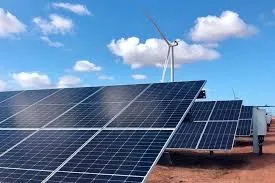bifacial vs monofacial solar panel
Bifacial vs. Monofacial Solar Panels A Comparative Analysis
As the world increasingly turns towards renewable energy sources, solar power has emerged as one of the most promising options. Within the realm of solar technology, bifacial and monofacial solar panels are two leading types, each with distinct advantages and applications. Understanding the differences between these two panel types can help consumers and businesses make informed decisions when investing in solar energy systems.
Monofacial Solar Panels
Monofacial solar panels are the traditional type of photovoltaic (PV) panels. They are designed to absorb sunlight on one side, typically the side facing the sun. These panels consist of solar cells encased in a protective layer made from glass, aluminum, and other materials. Monofacial panels have been around for decades and have a proven track record in various applications, making them a reliable choice for many installations.
The efficiency of monofacial panels generally ranges from 15% to 22%, depending on the technology used. Factors such as temperature, shading, and the angle of installation can influence their performance. Moreover, they are typically less expensive compared to bifacial panels, which may make them more accessible for residential users or smaller projects.
Bifacial Solar Panels
Bifacial solar panels, on the other hand, have gained popularity due to their unique design that allows them to collect sunlight from both the front and back sides. This dual-sided functionality enables bifacial panels to utilize reflected sunlight (or albedo) from surfaces such as soil, concrete, and water bodies, increasing overall energy generation.
The efficiency of bifacial solar panels can be significantly higher, often ranging from 20% to 25%, and in some optimally designed scenarios, even higher. The actual energy output depends heavily on the installation environment. For example, if placed in snowy regions or reflective areas, bifacial panels can generate more energy due to light reflection.
Key Advantages of Bifacial Panels
bifacial vs monofacial solar panel

1. Higher Energy Output The ability to capture sunlight from both sides can lead to an increase in overall energy production, making them particularly advantageous in large-scale solar farms.
2. Longer Lifespan Bifacial panels often have better durability and lifespan due to their robust design, which can withstand harsh elements and require less maintenance over time.
3. Better Performance in Low Light Bifacial panels tend to perform better in low-light conditions, as they can capture diffused sunlight and reflections during early mornings and late afternoons.
Considerations for Installation
While bifacial panels offer many advantages, the installation costs may be higher due to the required racking systems that position the panels for optimal light capture from both sides. Proper planning is essential to maximize their efficiency; for instance, installations should be elevated to allow for ground reflection.
Monofacial panels, although less efficient in some scenarios, are typically easier and cheaper to install, making them still a practical option for many residential users, especially in areas without conducive conditions for bifacial technology.
Conclusion
Choosing between bifacial and monofacial solar panels depends on various factors, including budget, space, installation environment, and energy needs. While bifacial panels present an exciting opportunity for enhanced energy output, monofacial panels remain a solid choice for many applications. By carefully considering the specific circumstances of each project, solar consumers can make an informed decision that best aligns with their energy goals. As technology continues to advance, both types of panels will likely evolve further, contributing significantly to the global shift towards sustainable energy solutions.
-
Navigating Off Grid Solar Inverter: From Use Cases to Trusted PartnersNewsAug.05,2025
-
Solar Edge String Inverter: A Wholesaler’s Guide to Inverter Technology SelectionNewsAug.05,2025
-
Microinverters: Revolutionizing Solar Energy UseNewsAug.05,2025
-
Future of Monocrystalline Solar Panel Efficiency: Latest Technological AdvancesNewsAug.05,2025
-
Solar Panels for House: A Complete Guide to Residential Solar EnergyNewsAug.05,2025
-
Panel Bifacial Performance in Snow and Low-Light ConditionsNewsAug.05,2025







